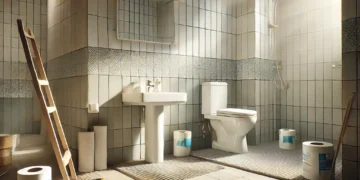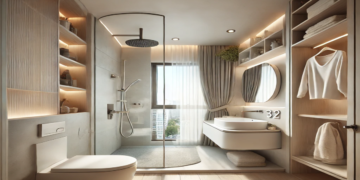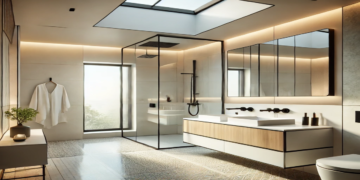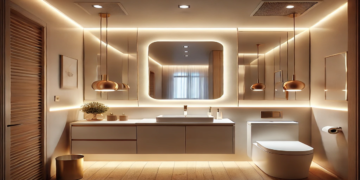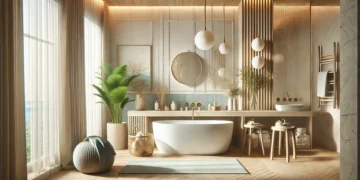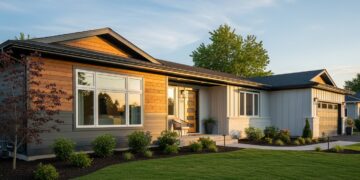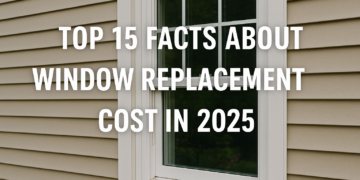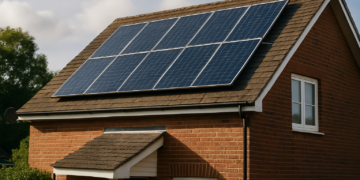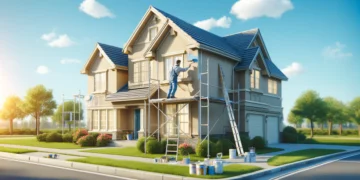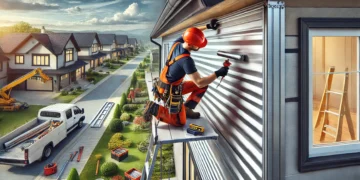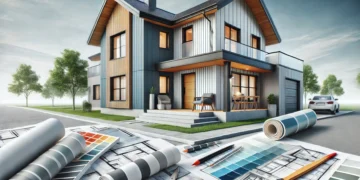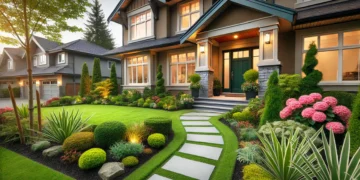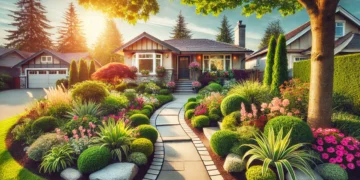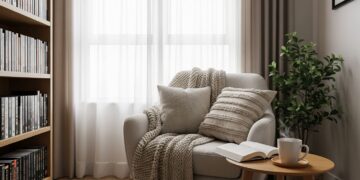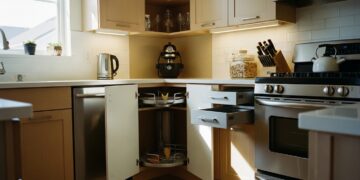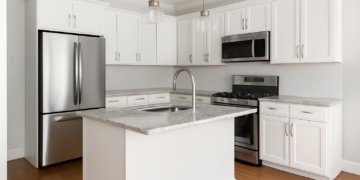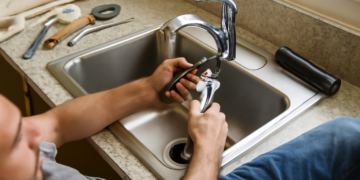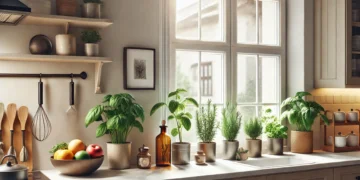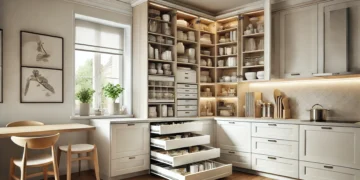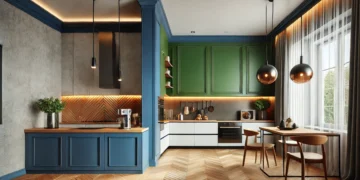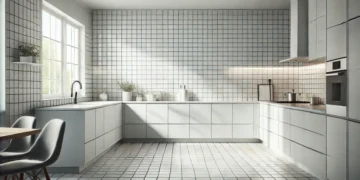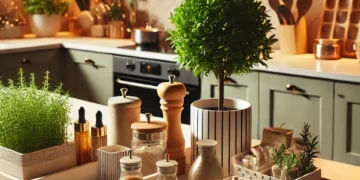Repainting your home’s exterior is one of the most impactful upgrades you can make, instantly boosting curb appeal and providing crucial protection against the elements. But before you dive into color swatches, a crucial question arises: How much does it truly cost to paint a house exterior?
While the average cost to paint a house exterior in the US typically ranges from $2,500 to $8,000, this number can swing dramatically based on a multitude of factors. From the size and architectural complexity of your home to the type of paint you choose and the labor required, every detail plays a role in the final price.
This comprehensive guide will break down all the key determinants of exterior house painting costs, provide clear price estimates, and offer practical tips to help you budget wisely and achieve a beautiful, long-lasting finish for your home.
Average Cost to Paint a House Exterior (2025 Data)
The overall house painting prices can vary significantly depending on your location, the scale of the project, and the professionals you hire. Below is a general overview of average exterior painting costs for different house sizes in the United States, assuming a professional job including labor and standard materials.
Average Exterior Painting Cost by House Size:
Price Per Square Foot for Painting the Exterior of a House
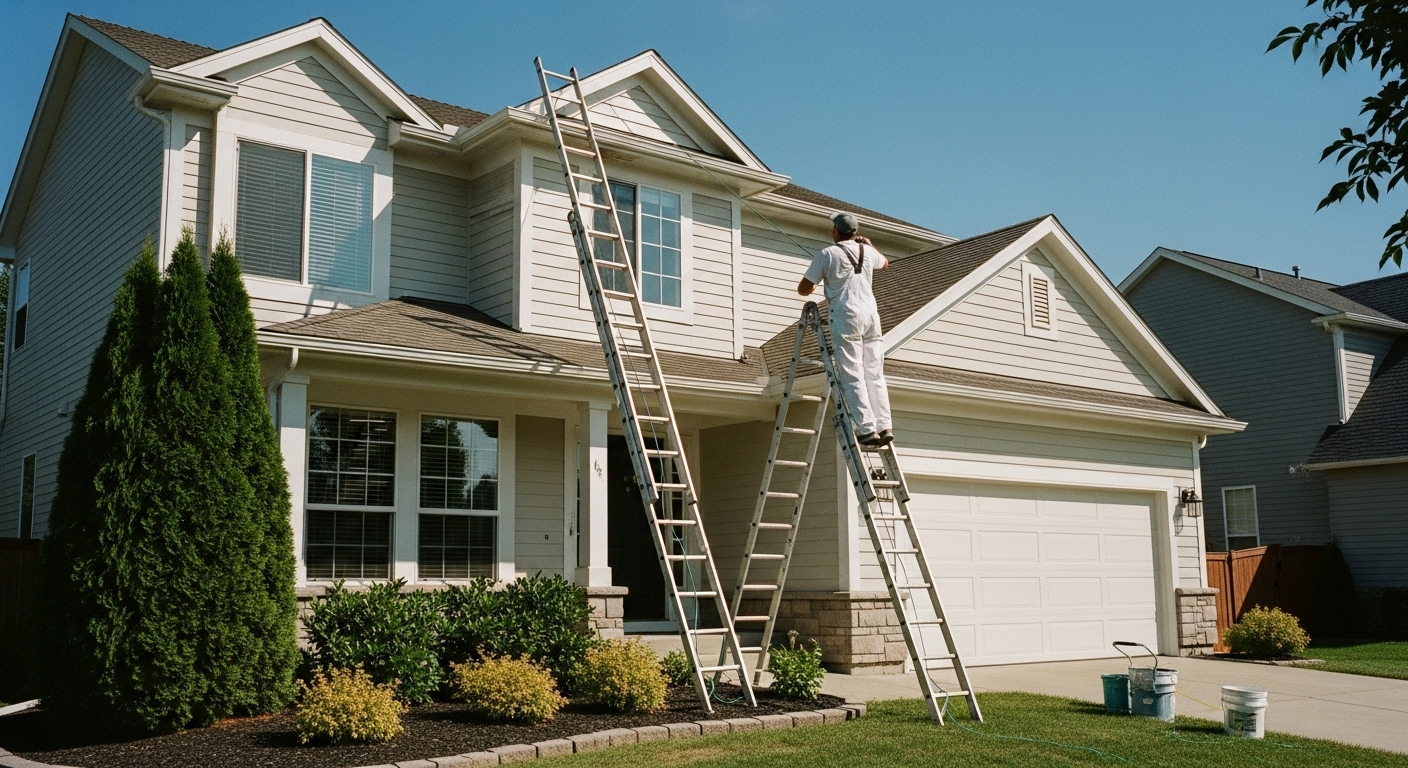
Generally, you can expect the price per square foot for painting the exterior of a house to fall between $1.50 and $4.00. This rate typically includes both labor and materials. Factors like the condition of your home’s exterior, the paint quality, and the complexity of the job will dictate where your project falls within this range.
Key Factors Influencing Your Exterior House Painting Costs
Understanding what drives the cost will empower you to budget accurately and make informed decisions. Here are the primary determinants:
1. House Size and Number of Stories
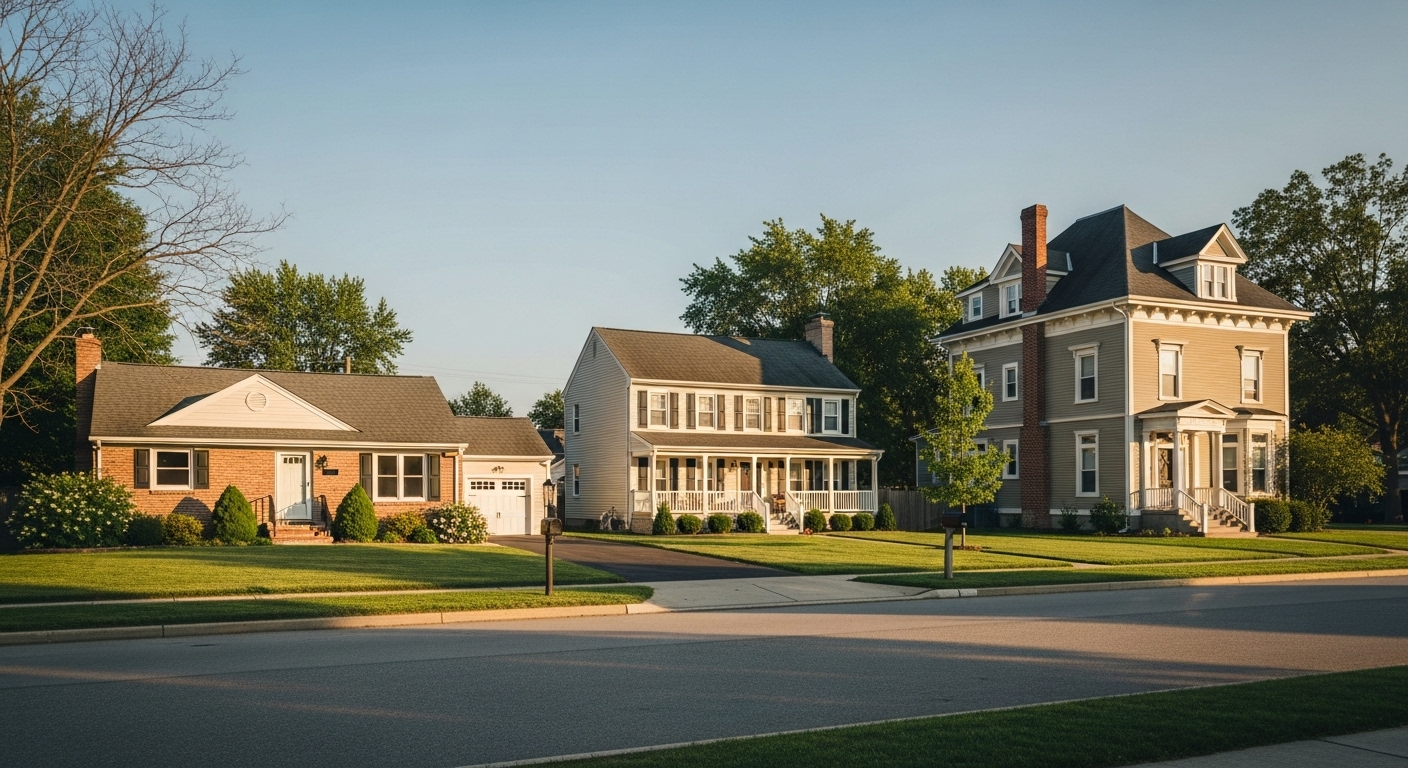
As you might expect, larger homes require more paint and significantly more labor hours, directly increasing the total cost to paint a house. The number of stories also plays a crucial role:
-
Single-story homes are generally the most affordable due to easier accessibility.
-
Multi-story homes (two, three, or more) require specialized equipment like tall ladders or scaffolding, increasing labor time and safety precautions, thus raising the overall house painting prices.
Estimated Cost by Number of Stories:
2. Surface Condition and Preparation
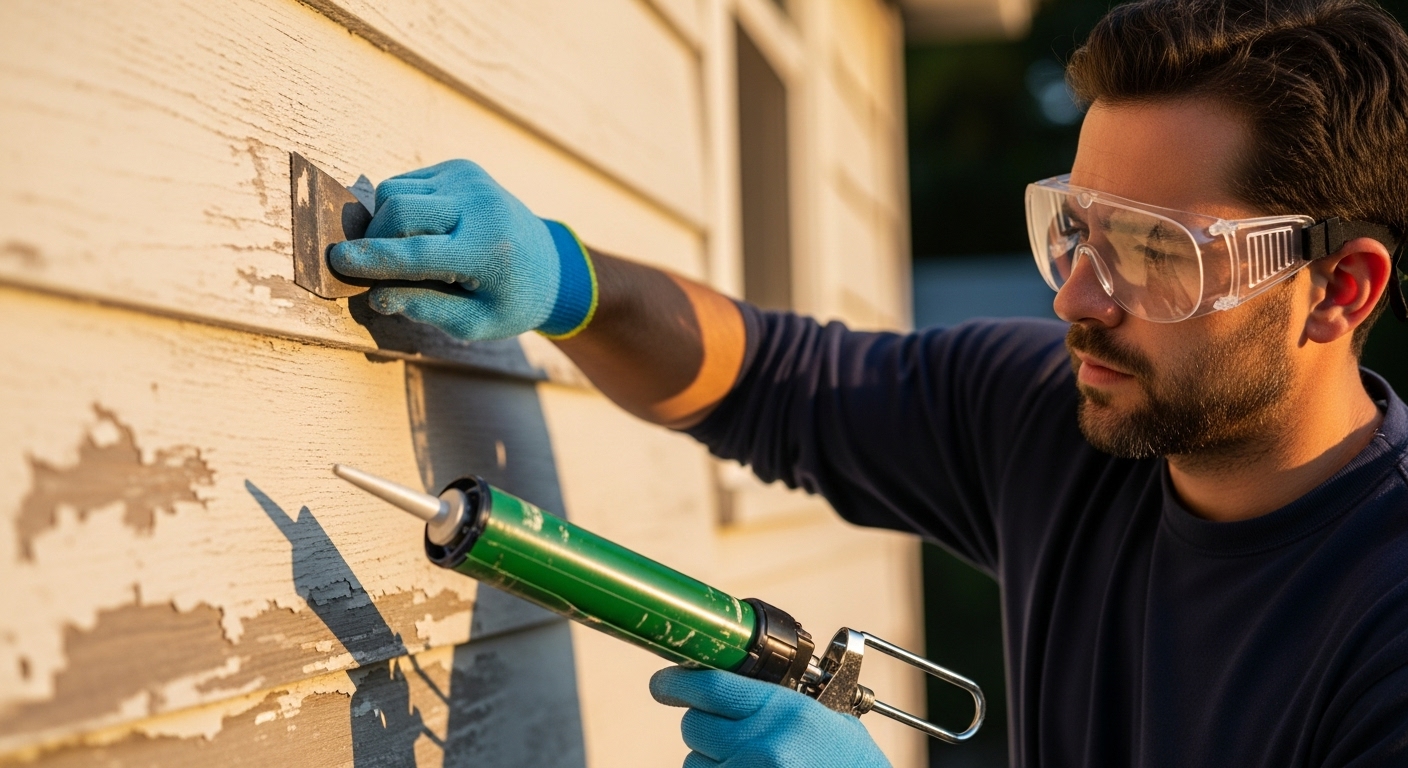
The integrity of your existing exterior surfaces is a major cost driver. A house with peeling paint, damaged siding, mildew, or other issues will require extensive preparation before painting can even begin. This “prep work” often includes:
-
Power washing: To remove dirt, grime, and loose paint.
-
Scraping and sanding: To remove old, flaking paint and create a smooth surface.
-
Minor repairs: Patching holes, repairing cracks, replacing rotten wood, or fixing damaged siding.
-
Priming: Essential for proper paint adhesion, especially on bare or patched areas.
-
Caulking: Sealing gaps and cracks around windows and doors.
The more neglected your home’s exterior, the more intensive (and costly) this preparation phase will be. For homes built before 1978, it’s crucial to be aware of potential lead-based paint regulations from the EPA. If your home has brick elements that need extensive cleaning or repair before painting, our guide on how to update a brick house offers relevant tips on preparing your brick exterior.
3. Siding Material Type
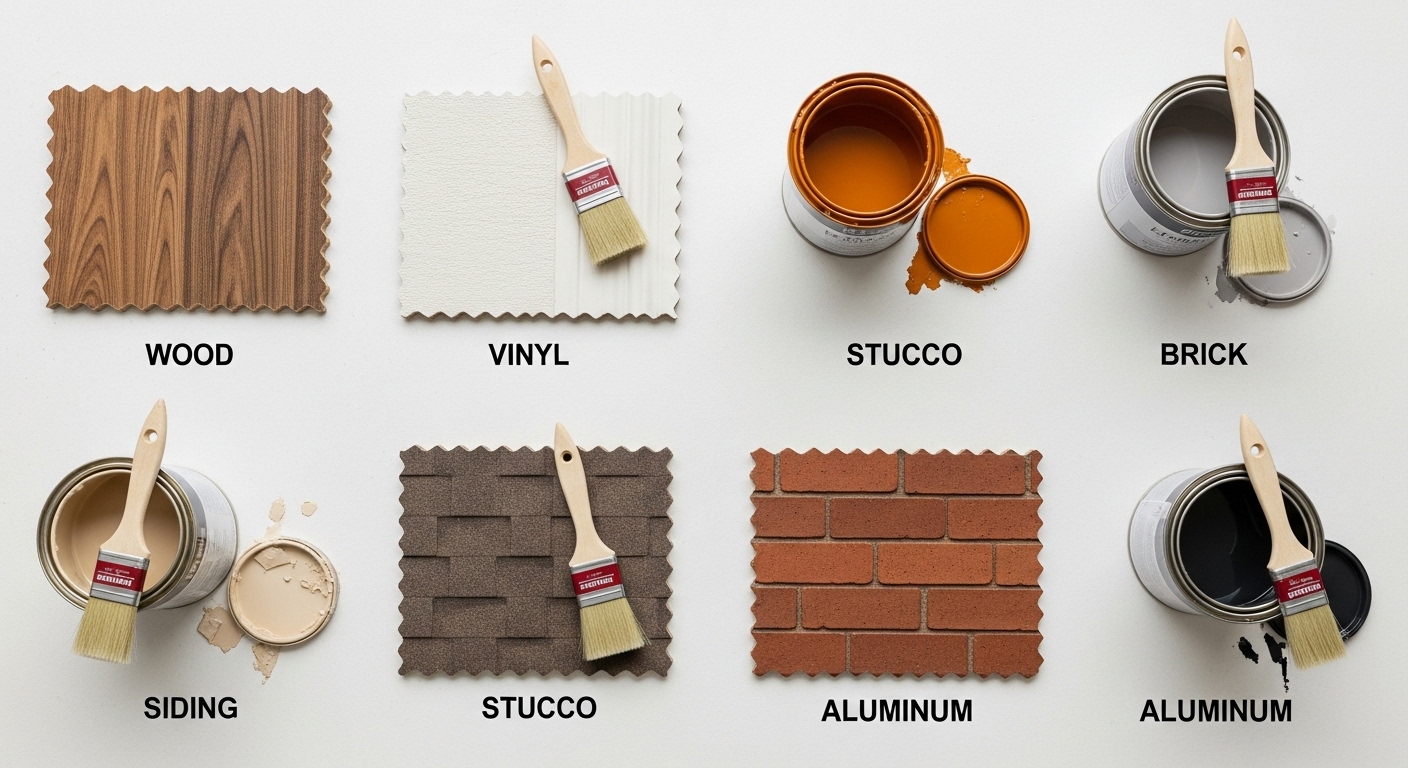
Different siding materials interact with paint in unique ways, affecting both the type and quantity of paint needed, and consequently, the exterior paint prices.
-
Wood siding: Often porous and may require more paint, especially if unpainted or heavily weathered.
-
Vinyl siding: Can be painted, but requires specific paint types and careful preparation to ensure adhesion and avoid warping.
-
Stucco: Highly porous, often needs more paint, and may require specialized primers and application techniques.
-
Brick: Usually needs a masonry-specific primer and more paint due to its porous nature.
-
Metal (e.g., aluminum): Requires a specific primer for proper adhesion and durability.
4. Paint Quality, Type, and Finish
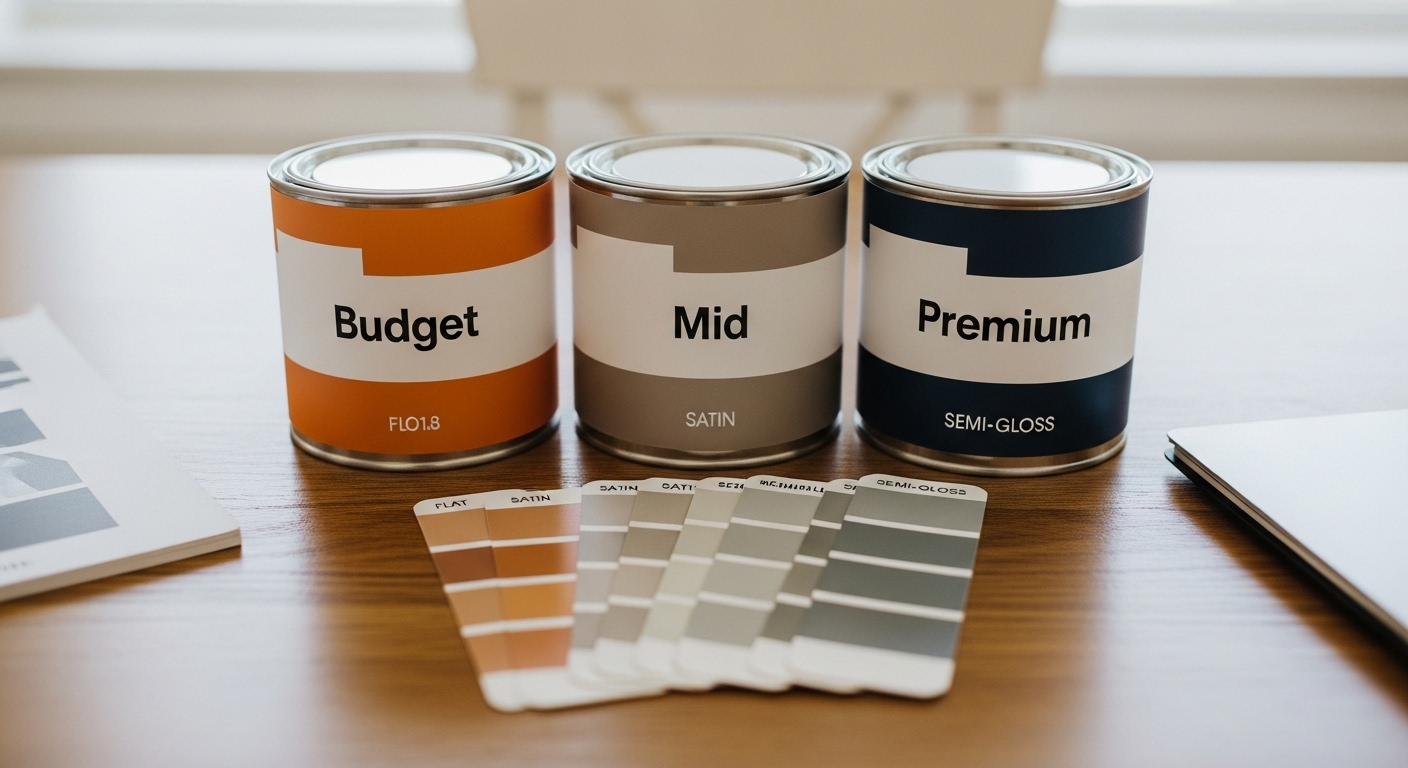
The choice of paint significantly impacts both the upfront cost to paint a house and its long-term durability. While budget brands may seem appealing initially, investing in higher-quality paint often leads to substantial savings over time due to superior coverage and longevity.
Exterior Paint Price by Quality:
-
Paint Type: Latex (acrylic) paints are popular for exteriors due to flexibility and fade resistance. Oil-based paints offer excellent durability but dry more slowly.
-
Finish: Flat, matte, eggshell, satin, semi-gloss, and high-gloss finishes vary in price, with higher sheens generally being more durable and slightly more expensive.
Understanding the differences in exterior paint quality is crucial for making a cost-effective decision in the long run. Reputable paint manufacturers like Sherwin-Williams often have articles on their websites explaining the various grades of paint and their respective benefits.
5. Labor Costs and Geographic Location
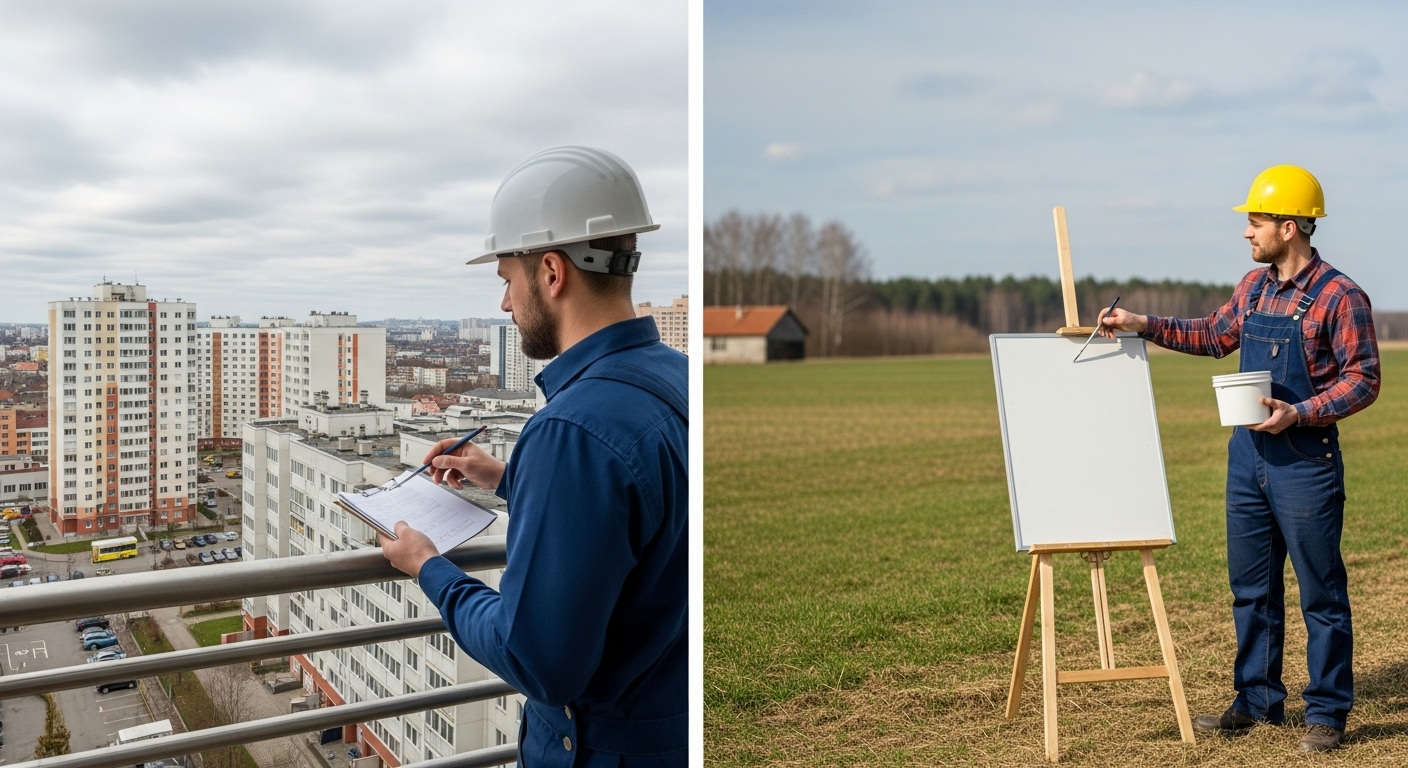
Labor is often the largest component of the cost to paint the exterior of a house, typically accounting for 70-80% of the total project price. Professional painters’ rates vary based on:
-
Experience and Reputation: Highly experienced painters or well-established companies may charge more.
-
Hourly Rates: Individual painters might charge from $25-$75+ per hour, but most projects are quoted as a flat fee.
-
Geographic Location: Rates are significantly higher in areas with a higher cost of living (e.g., major cities like New York, San Francisco) compared to rural or lower-cost-of-living regions.
For a general idea of the typical labor costs for exterior painting in your area, home improvement platforms like Angi (formerly Angie’s List) often provide average service rates for painters.
6. Architectural Complexity and Accessibility
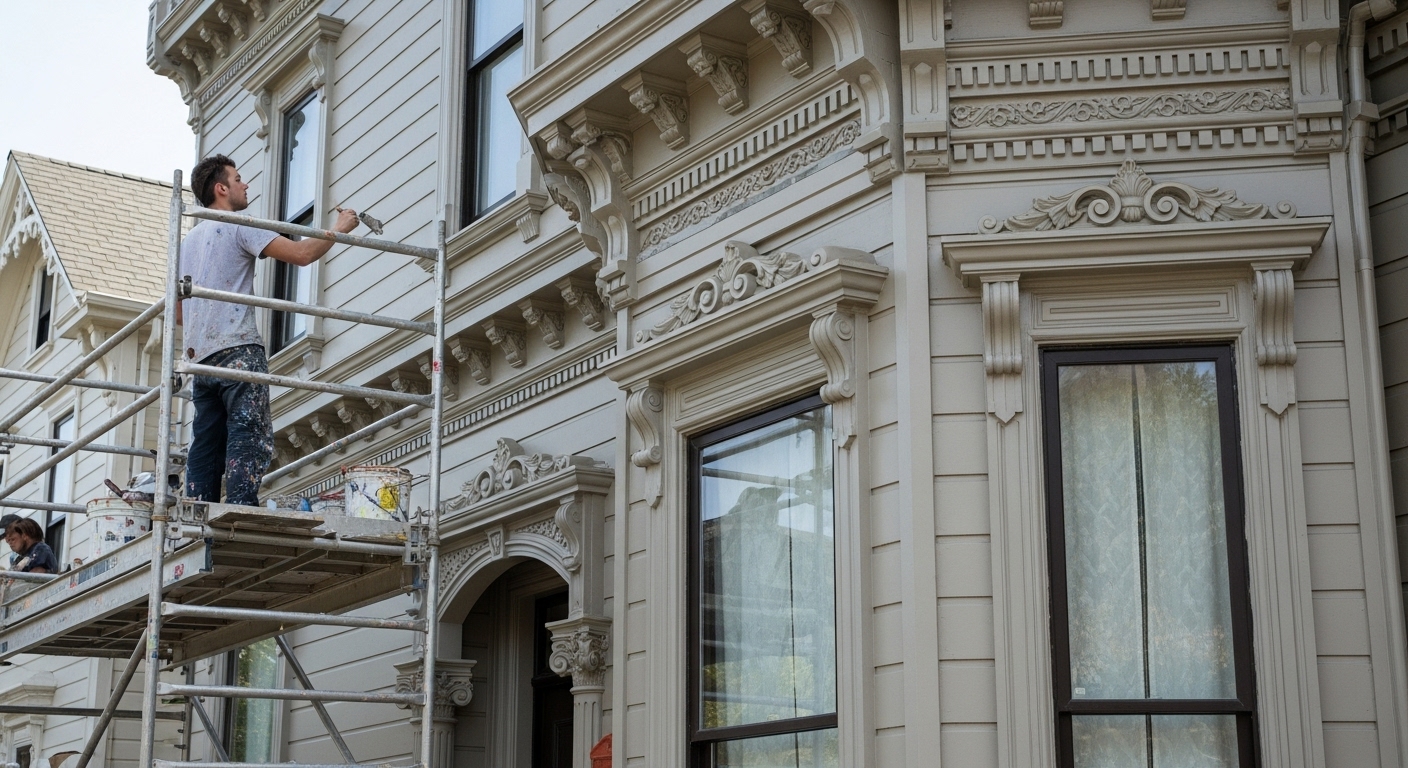
The intricate details and accessibility challenges of your home can significantly increase labor hours and, consequently, the cost.
-
Ornate Features: Homes with detailed trim work, decorative molding, cornices, or numerous windows and doors require meticulous hand-painting and more time.
-
Number of Colors: If you choose multiple paint colors for different elements (siding, trim, doors, accents), the precision work involved in “cutting in” multiple colors will add to the labor cost.
-
Accessibility Challenges: Steep inclines, dense landscaping, decks, or obstructions around the house can make setting up ladders or scaffolding more difficult and time-consuming.
The complexity is also often a factor in larger exterior painting projects, and for more ideas on managing the challenges of complex exterior painting projects, especially for larger homes, you can explore our diverse exterior home remodel ideas.
Common Additional Elements & Estimated Costs:
7. Time of Year / Seasonality
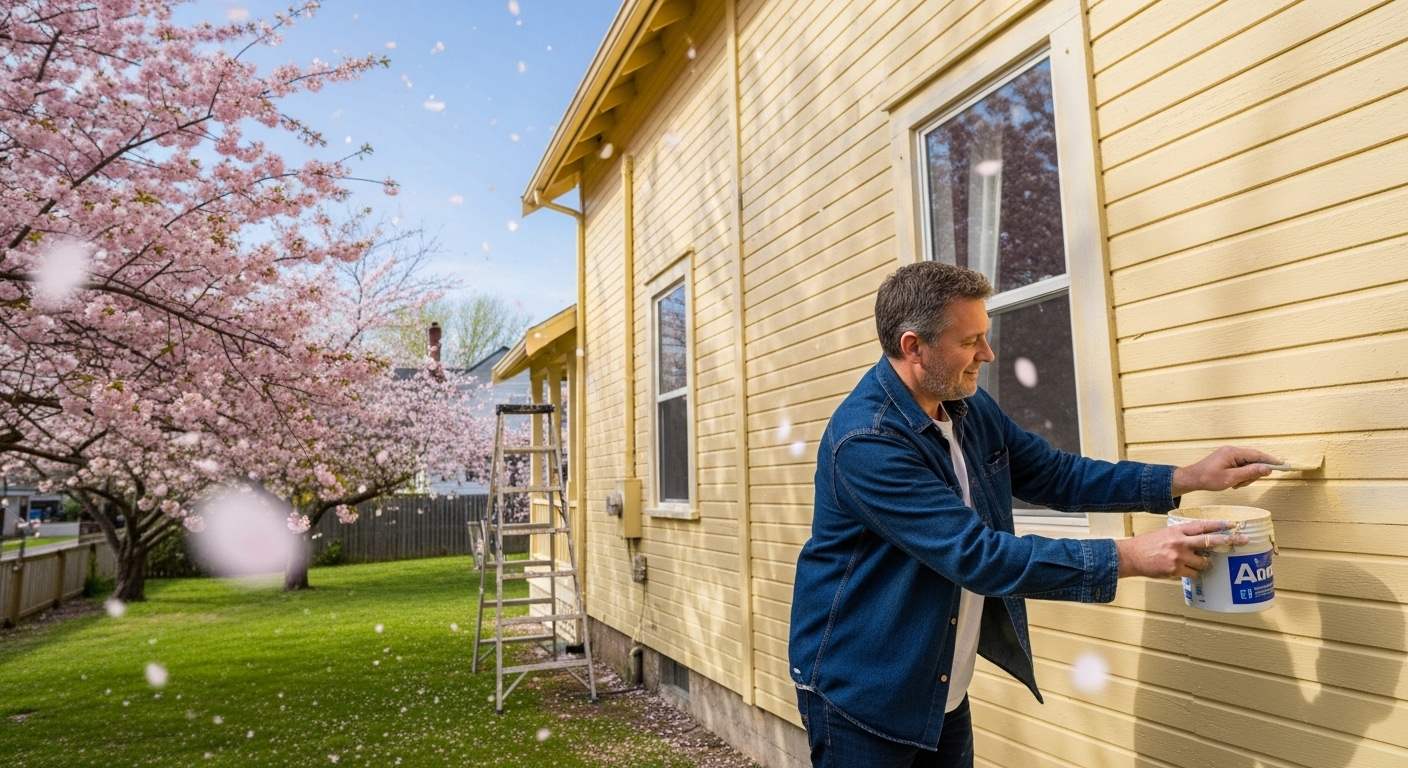
While not a direct “factor affecting” the base cost, the season can influence scheduling and potentially offer opportunities for discounts. Painters are typically busiest in late spring, summer, and early fall when weather conditions are ideal. During their slower seasons (often late fall, winter, or early spring in some climates), you might find better rates or more flexible scheduling. However, ensure weather conditions are suitable for painting for proper paint curing. Before starting any major exterior project, it’s always wise to check your local building department’s regulations and any Homeowners’ Association (HOA) guidelines regarding exterior color changes or permits.
How to Estimate the Cost to Paint the Outside of a House
For a quick and rough estimation of how much to paint a house exterior, you can follow these steps. Remember, this provides a ballpark figure, and professional quotes are always recommended for accuracy.
-
Measure the perimeter: Walk around your house and measure the length of each side. Add these lengths together.
-
Multiply by height: Estimate the average height of your house from the ground to the eaves. Multiply your total perimeter by this height to get a rough surface area.
-
Subtract non-painted areas: Estimate the total area of doors and windows (roughly 10-20% of the wall area for an average home) and subtract this from your total surface area. This gives you the “paintable square footage.”
-
Calculate paint needed: Divide the total paintable square footage by 350-400 (the average coverage of one gallon of exterior paint). This gives you the approximate number of gallons needed per coat. (Multiply by 2 for two coats).
-
Estimate paint cost: Multiply the number of gallons by your chosen paint’s average cost per gallon.
-
Add labor costs: As labor is 70-80% of the total project, multiply your estimated paint cost by 3 to 4 times to get a very rough total.
This is a simplified way of getting an idea of the house painting prices. However, it is best to get an accurate, detailed estimate from professionals as it will provide the exact cost for the work to be done based on their assessment of your specific home.
DIY vs. Professional Painting: Cost and Value Comparison
Many homeowners consider painting their house exterior themselves to save money. While DIY can cut the upfront costs of labor, it’s crucial to acknowledge the trade-offs in time, effort, necessary tools, safety, and ultimately, the quality and longevity of the finish.
DIY Painting Costs
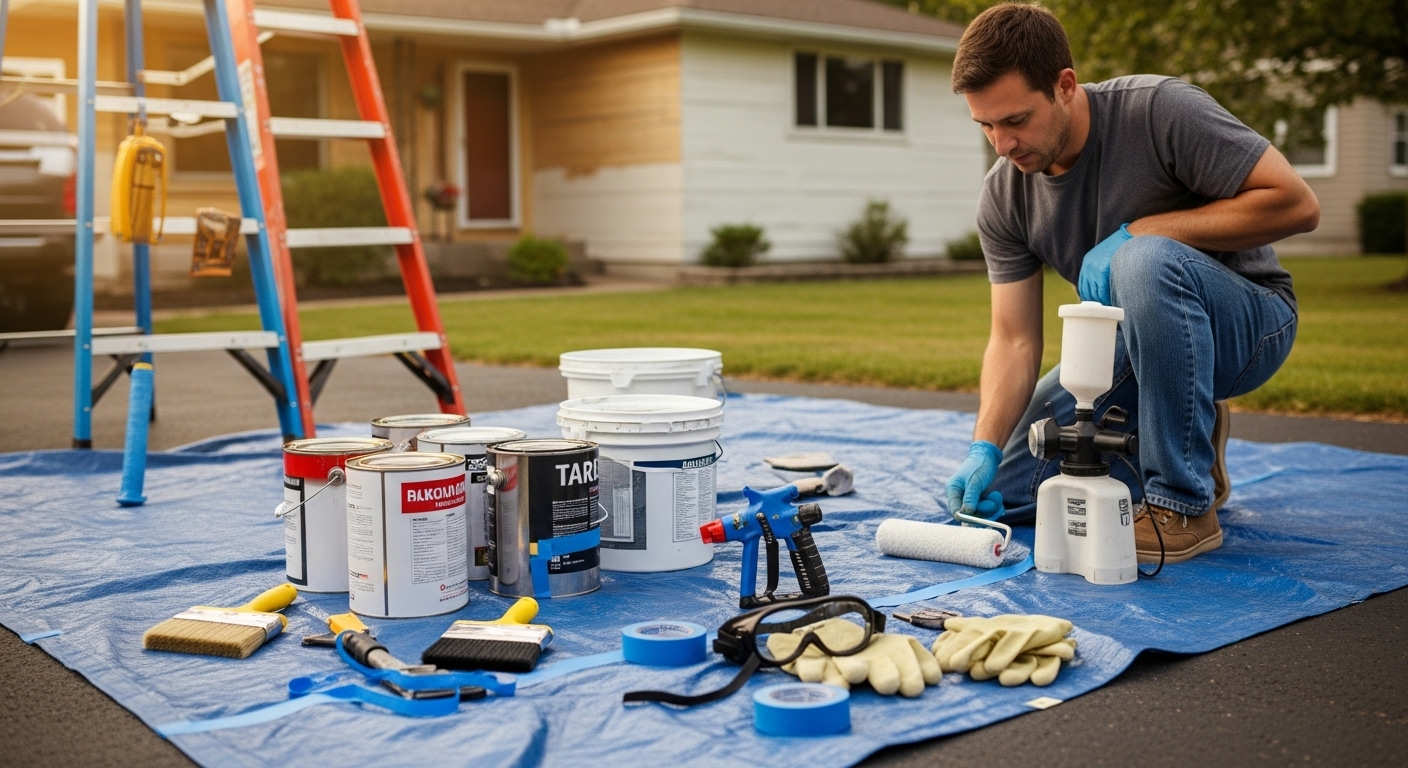
If you opt for DIY, your main expenses will be materials and equipment rentals:
-
Paint and Primer: $500 – $1,500+ (depending on house size and paint quality).
-
Brushes, Rollers, Tape, Tarps: $100 – $300.
-
Ladder Rental: $50 – $100 per day.
-
Paint Sprayer Rental: $50 – $150 per day (plus potential additional paint usage).
-
Safety Gear: Gloves, masks, eye protection.
Considerations for DIY:
-
Time Commitment: Exterior painting is a multi-day, labor-intensive project, especially with proper prep.
-
Skill Level: Achieving a professional, even finish requires skill and experience. Mistakes can be costly to fix.
-
Safety Risks: Working at heights on ladders is inherently dangerous.
-
Warranty: No professional warranty on your work.
Professional Painting Costs
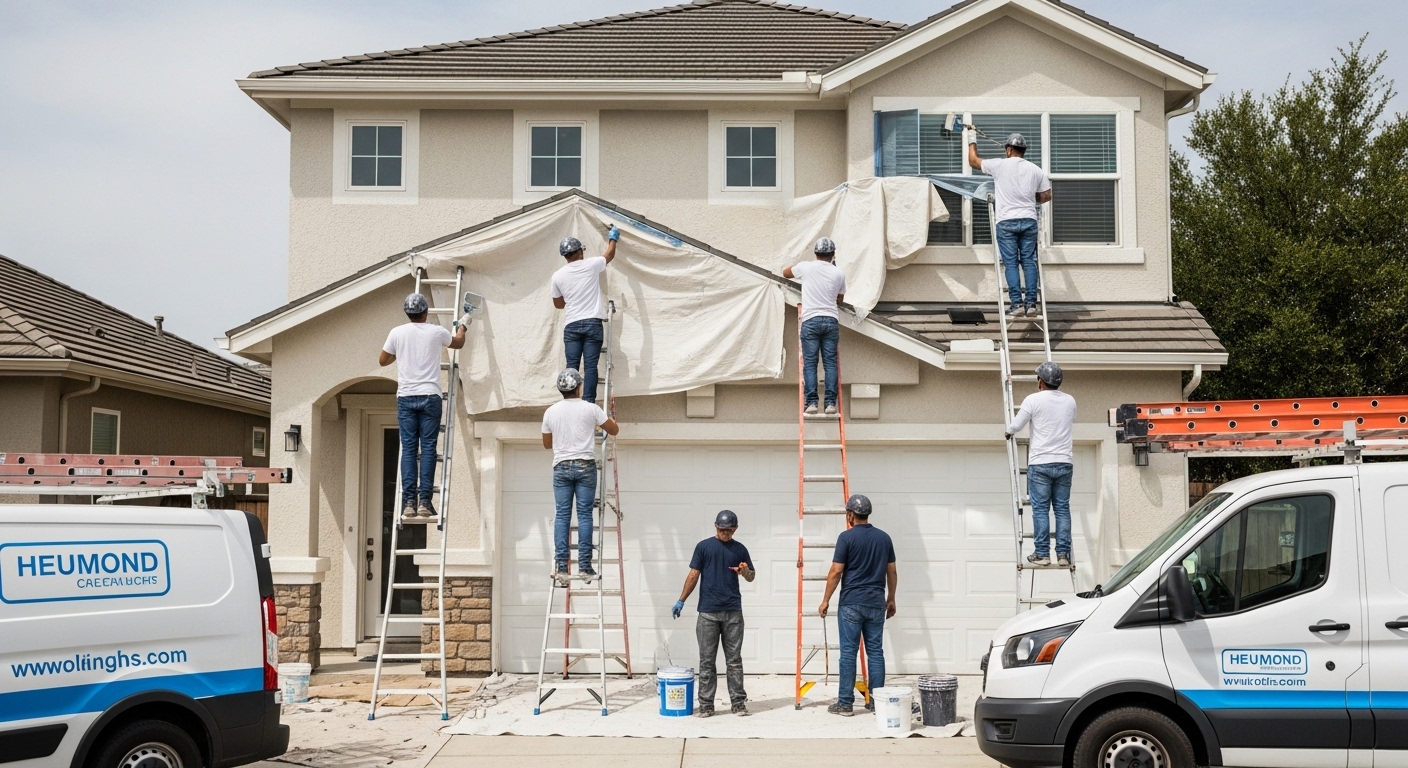
Professional services, while sometimes more costly upfront, offer significant advantages in terms of expertise, efficiency, and desired quality. The cost to paint the outside of a house professionally typically ranges from $2,500 to $8,000+.
Benefits of Professional Painting:
-
Expertise: Experienced painters know the best techniques, prep methods, and paint applications for various surfaces.
-
Efficiency: They have the right tools and crew to complete the job quickly and effectively.
-
Quality Finish: A uniform, smooth, and durable paint job that adds value to your home.
-
Warranty: Most reputable painters offer warranties on their work.
-
Safety: Professionals are trained and equipped to handle heights and hazardous materials safely.
For homeowners looking for ways of managing their home improvement budget while considering both DIY and professional options, our article on affordable home decor ideas provides various tips and considerations for cost-conscious home projects.
Smart Tips to Reduce the Cost to Paint the Exterior of Your House
While exterior painting is a significant investment, there are smart strategies to help manage your budget without compromising too much on quality.
-
Get Multiple Quotes: This is paramount. Always obtain detailed quotes from at least three reputable house painters. This allows you to compare pricing, services offered, and ensure you’re getting a fair price. The Better Business Bureau (BBB) offers valuable tips on how to choose a painting contractor and emphasizes the importance of obtaining several bids to ensure a fair price and quality service.
-
Choose the Right Time (Off-Season): Painters often offer slight discounts during their slower periods, typically late fall, winter, or early spring (depending on your climate zone). While weather might be a factor, strategic timing can lead to savings.
-
Prepare the Surface Yourself: If you’re comfortable with some DIY, you can significantly reduce labor costs by doing preliminary prep work. This might include:
-
Thoroughly cleaning the exterior with a power washer.
-
Scraping off loose or peeling paint.
-
Performing minor fixes like filling small cracks or holes.
-
-
Consider Simpler Color Choices: Opting for a single, uniform color or a very simple color scheme (siding + trim) can reduce labor costs. Intricate multi-color designs require more precise cutting-in and masking, which adds time and expense. Also, choosing a color similar to your existing one might mean fewer coats are needed, saving on paint and labor.
-
Regularly Maintain Your Home’s Exterior: Keeping your home’s exterior in good condition year-round (e.g., cleaning, quick repairs to minor damage) can prevent costly, extensive repairs down the line, ultimately reducing the prep work needed for future paint jobs.
The Importance of Quality in Exterior Painting
Regardless of the initial house painting prices, the quality of the job is what truly matters in the long run. Skimping on materials or labor often leads to a shorter lifespan for your paint job and more frequent repainting, which costs more over time.
-
Longevity of Paint Job: A professionally applied, high-quality exterior paint job should last at least 5-10 years, with premium paints lasting 10-20+ years. Factors like harsh weather conditions, intense UV exposure, and the grade of materials used are determining factors in paint longevity.
-
Protection for Your Home: Noticeable exterior painting is not just for beauty; it’s a vital shield. It protects the structural components of your house from moisture, UV damage, rot, mildew, and pests, helping to prevent more significant (and expensive) repairs in the future.
Conclusion: Making an Informed Decision on Your Exterior Paint Project
The cost to paint a house exterior may differ widely, but by understanding the various factors that influence exterior painting cost, homeowners can budget effectively, make informed choices, and maximize their investment.
Whether you choose to tackle the project yourself or hire experienced professionals, a well-planned exterior paint job dramatically enhances your home’s curb appeal, protects its structural integrity, and boosts its overall value. Take the time to gather accurate estimates, weigh your options, and prioritize quality for a finish that lasts for years to come.
Ready to transform your home’s exterior? For more inspiration on enhancing your home’s facade, explore our diverse exterior home design ideas.
FAQs: Your Exterior Painting Cost Questions Answered
1. What is the average cost to paint a house exterior?
The average cost to paint a house exterior typically falls between $2,500 and $8,000 for a professional job. However, this is a broad average, and your specific cost can vary significantly based on factors like the size of your house, the quality of paint used, the condition of the exterior walls, and your geographic location.
2. How does the size of the house affect the painting cost?
The size of the house is one of the primary factors in determining the price of exterior painting. A larger house requires more paint and significantly more labor hours, directly increasing the overall cost. For example, painting a 1,500-square-foot house may cost around $3,500 – $5,000, whereas a 3,000-square-foot house could easily cost $7,000 – $12,000 or more, due to the doubled surface area and increased labor complexity, especially if it’s a multi-story home.
3. What additional factors can influence the cost of exterior house painting?
Beyond size, various aspects contribute to exterior painting costs, including:
-
The selection and quality of the paint (premium paints cost more but last longer).
-
The condition of the present exterior surface (requiring extensive prep work like scraping, sanding, or repairs).
-
The number of stories in the house (multi-story homes need more equipment and labor).
-
The intricacy of the house design, including ornate trim work, many windows/doors, or complex architectural features.
-
The need for repairs, such as wood rot, siding replacement, or structural issues.
-
The site accessibility includes landscaping, steep slopes, or obstructions.
-
Geographic location is due to varying labor rates.
4. How much does paint typically cost for an exterior house painting project?
Exterior paint prices are quite diverse, depending on quality and brand. You can anticipate a cost of between $30 and $80 per gallon for mid-range to high-quality paints. Premium paints can sometimes exceed $100 per gallon. While more expensive upfront, these high-end paints often provide superior coverage and last significantly longer, reducing the frequency of repainting and saving you money in the long run.
5. Are there any ways to reduce the cost of painting a house exterior?
Yes, there are several effective ways to cut down on costs:
-
Get multiple quotes from reliable, reputable painters to compare bids.
-
Schedule during the off-season (late fall/winter/early spring) when demand for painting businesses might be lower.
-
Do part of the preparation work yourself, such as power washing, light scraping, or minor repairs.
-
Choose a more straightforward color scheme with fewer colors to reduce intricate detail work and potentially the number of coats needed.
-
Regularly maintain the outside of your house to keep the overall condition good, thereby minimizing future repair costs and extensive prep work for subsequent paint jobs.
Are you looking to give your home a completely different look? Well, if you are looking into how much it will cost to paint the exterior of a house, then you should know that budgeting is going to be a wise choice. Be it hiring a pro or doing the work by oneself, knowing the factors that influence costing is quite important. Get your estimates right, save money, and achieve that perfect finish. Time to plan for the exterior paint job today, and see the change it brings to your home’s curb appeal, with the right plan and budget!


